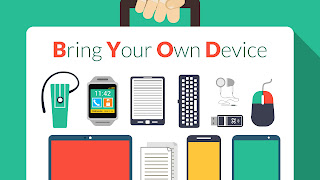Twitter Feed
Packing My Bags For Prague and Dimension Data #Perspectives2015
Prague is a beautiful city! My last time was in June 2010 when Jeremy Geelan invited me to speak at CloudExpo Europe (see my blog post and video from that…
SAP/HANA Does Big Data for National Security
Carmen Krueger, SAP NS2 SVP & GM While SAP is globally renowned as a provider of enterprise management software, the name is hardly ever associated with the spooky world of…
Be future ready: Selling to millennials and a marketplace of one
There is almost a deafening discussion going on about the self-centeredness of today’s young adults. Weather you call them Generation Y, millennials or twenty-somethings, the general refrain seems to be…
Surviving an Environment of IT Change
“The Federal government today is in the midst of a revolution. The revolution is challenging the norms of government by introducing new ways of serving the people. New models…
OmniTI and GovCloud Join Forces to Provide Cloud-based Services
FULTON, Md.–(BUSINESS WIRE)–OmniTI, a leading provider of web infrastructures and applications for companies that require scalable, high-performance, mission critical solutions, today announced that it has partnered with GovCloud Network, LLC…
Cloud microservices make their play
by Kevin L. Jackson Cloud computing seems destined to be the way enterprises will use information technology. The drastic cost reductions and impressive operational improvements make the transition an unstoppable trend.…
Tweeps Are People Too!!
I woke up this morning to the devastating news about the earthquake in Nepal. Sitting here in California that destruction is literally on the other side of the world but…
The CISO role in cybersecurity: Solo or team sport?
The average length of time in the commercial sector between a network security breach and when the detection of that breach is more than 240 days, according to Gregory Touhill, deputy…
Setting standards for IoT can capitalize on future growth
by Melvin Greer Managing Director Greer Institute for Leadership and Innovation The adoption of Internet of Things (IoT) appears to be unquestioned. Advances in wearables and sensors are strategic to…
Women in tech: Meet the trailblazers of STEM equality
By Sandra K. Johnson CEO, SKJ Visioneering, LLC Science, technology, engineering and mathematics (STEM) professionals are drivers of innovation,creativity and invention. STEM disciplines are significant drivers of economies worldwide,…
- Increased employee mobility (63%), satisfaction (56%) and productivity (55%) dominate as the top drivers of BYOD. These employee related drivers are considered more important than reduced costs (47%).
- Security (39%) and employee privacy (12%) are the biggest inhibitors of BYOD adoption.
- 20% of surveyed organizations have suffered a mobile security breach, primarily driven by malware and malicious WiFi.
- Security threats to BYOD impose heavy burdens on organizations’ IT resources (35%) and help desk workloads (27%).
- Despite increasing mobile security threats, data breaches and new regulations, only 30% of organizations are increasing security budgets for BYOD in the next 12 months and 37% have no plans to change their security budgets.
- 72% – Data leakage/loss
- 56% – Unauthorized access to company data and systems
- 54% – Downloading of unsafe apps or content
- 52% – Malware
- 50% – Lost or stolen devices
- 49% – Vulnerability exploitation
- 48% – Lack of control on endpoint security
- 39% – Infrequent software updates
- 38% – Compliance
1. Create your policy before procuring technology: To effectively use mobile device management (MDM) technology for employee owned devices Policy must precede technology. Also note that these policies will have broad corporate-wide implications for IT, HR, legal, and security.
- Mobile device management
- Application security assessments
- Application testing services
- Application source code security assessments; and
- Embedded device security.
This post was brought to you by IBM Global Technology Services. For more content like this, visit ITBizAdvisor.com.
( Thank you. If you enjoyed this article, get free updates by email or RSS – © Copyright Kevin L. Jackson 2017)
Cloud Computing
- CPUcoin Expands CPU/GPU Power Sharing with Cudo Ventures Enterprise Network Partnership
- CPUcoin Expands CPU/GPU Power Sharing with Cudo Ventures Enterprise Network Partnership
- Route1 Announces Q2 2019 Financial Results
- CPUcoin Expands CPU/GPU Power Sharing with Cudo Ventures Enterprise Network Partnership
- ChannelAdvisor to Present at the D.A. Davidson 18th Annual Technology Conference
Cybersecurity
- Route1 Announces Q2 2019 Financial Results
- FIRST US BANCSHARES, INC. DECLARES CASH DIVIDEND
- Business Continuity Management Planning Solution Market is Expected to Grow ~ US$ 1.6 Bn by the end of 2029 - PMR
- Atos delivers Quantum-Learning-as-a-Service to Xofia to enable artificial intelligence solutions
- New Ares IoT Botnet discovered on Android OS based Set-Top Boxes


